What and how to spray currants in the fall?
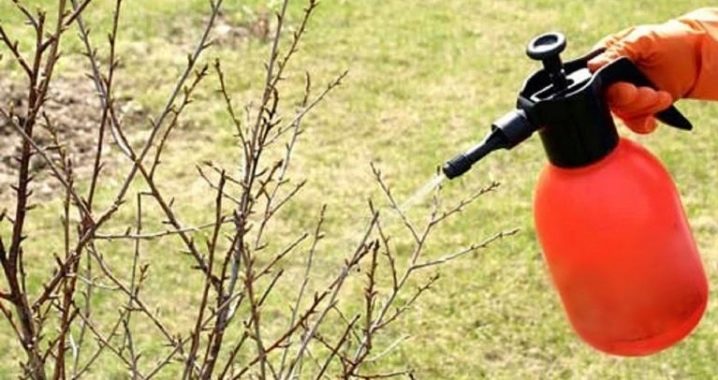
Preparation for a new horticultural season always begins in the fall - this is when the preventive treatment of plantations from diseases and insects takes place. Currant bushes, like any other crops, also require similar spraying.
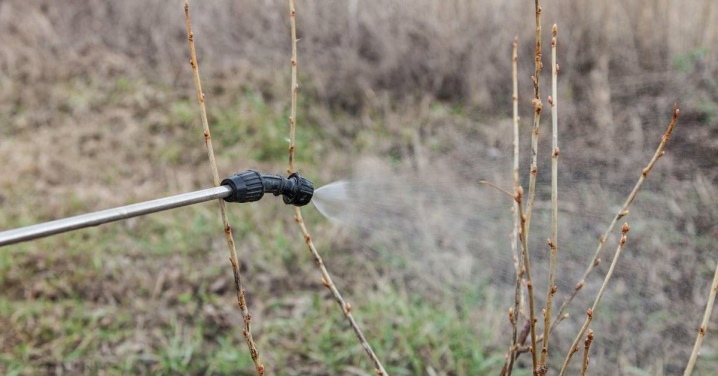
The need for a procedure
Autumn processing of berry bushes plays a very important role. Spraying, carried out precisely after harvest, prevents the development of infectious and fungal diseases, as well as the invasion of insects, in the next season. If the culture demonstrated strong immunity throughout the summer, then the final procedure will allow this positive trend to be maintained. In addition, timely processing will increase the yield of the shrub, quickly "wake up" the plantation in the spring and provide the gardener with healthy planting material necessary for the propagation of currants. In principle, this kind of prevention prolongs the life of plants.
Spraying at the end of the season prevents the development of fungal diseases such as powdery mildew, gray mold, white spot and rust, as well as a number of viral diseases. Despite the fact that they affect different parts of the currant, in most cases everything ends with the death of the plant. The danger of these fungi is enhanced by the fact that a bush affected by one of them most often infects its neighbors.
The insecticides used become protection from the attacks of aphids, spider mites, whiteflies, leafworms and other insects, whose vital activity sometimes leads to the complete death of plantings.
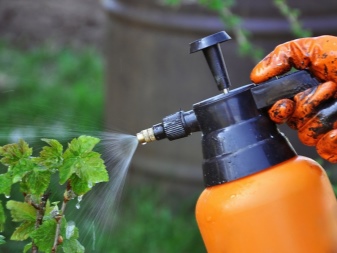
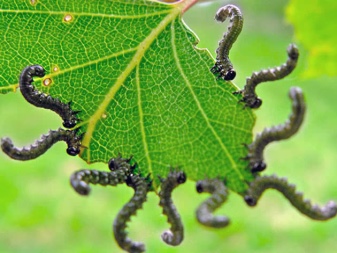
Processing time
It is customary to carry out autumn prevention of currants from late September to early October. Usually, by this time, the entire crop has already been harvested, and the bushes have been sanitized pruning. However, if due to weather conditions the fruits later reached maturity, these dates may be slightly shifted. Again, if the harvesting of fruits will be carried out in the summer, then the necessary procedures can be carried out at the end of the summer. The specific dates are determined depending on the region where the crop is grown, weather conditions and the characteristics of the variety.
If the gardener is engaged in the cultivation of red currants, then before the final use of insecticides, fungicides and folk remedies, you need to wait for the foliage to fall off on its own... Black varieties of berries are allowed to be "exposed" on their own. The autumn day, when spraying will be carried out, should be dry, calm and with not particularly low temperatures.
Of course, it is necessary to act before the onset of frost and on a dry day. If you process the berry in the rain, then all the useful compounds will be washed off with water.

Precipitation that falls a few days after treatment will also affect, therefore, before planning spraying it is worth finding out the nearest weather forecast. Cloudiness, on the contrary, is considered an advantage, but it is absolutely not worthwhile to expose wet plants to chemicals. It is customary to organize preventive measures either early in the morning or late in the evening.
Spraying with chemicals
Spray black or red currants in the fall should be both for pests and diseases. When working with chemicals, the gardener must take care of the protection of eyes, skin and respiratory organs.
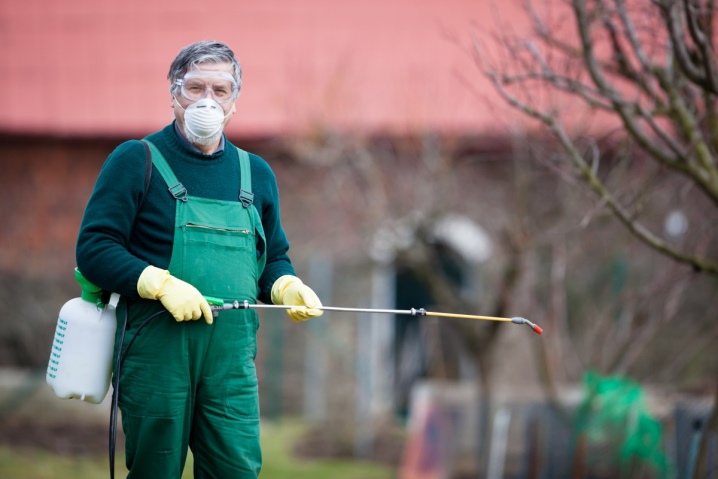
Insecticides
Insecticides - chemicals designed to control insects can affect the latter in different ways: by direct contact or by inhalation of toxic fumes.
- To preserve berry plantings, be sure to use karbofos - a drug that eliminates aphids, kidney moths, ticks and scale insects. The chemical can be purchased in convenient tablet or granular form, as well as in powder or emulsion form. For processing, it is required to dilute 75 grams of the product in a bucket of water, and then apply at least 1.5 liters of the resulting mixture for each specimen of currants.
- A drug called "Confidor" counteracts the spread of beetles and aphids. The spray solution is prepared from 5 milliliters of the chemical and 6-7 liters of settled liquid. A feature of the product is that it does not poison the root system of the culture and does not linger in the soil.
- Very fast Actellik. Once inside the body of insects, it disrupts the functioning of all their systems, which, in turn, leads to death. The drug in the amount of 2 milliliters is always diluted in one and a half liters of water.
- The use of urea makes it possible to destroy populations of sucker and aphids that have settled on currants. Spraying is carried out with a dilution of 50-70 grams of the drug in one liter of water.
Experts recommend alternating different insecticides for crop prevention so that pests do not become addictive.
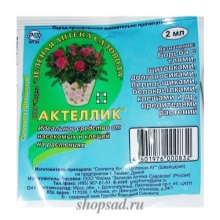
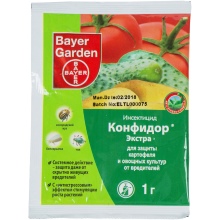
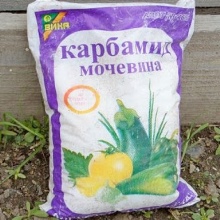
Fungicides
Treatment of currants with fungicides before the arrival of winter allows you to meet the next season without most fungal diseases.
- Copper sulfate is considered to be one of the most effective remedies., which is suitable for both prevention and direct elimination of the focus of infection. In principle, it is allowed to use it for irrigating the soil, but spraying is more effective. The components of the medicinal solution are combined with water in a proportion of 20 grams per 10 liters.
- Loved by gardeners and Burgundy liquid - multifunctional drug used for prophylaxis, active treatment and feeding of the culture with calcium. For autumn processing, 40 grams of dry matter is diluted in 10 liters of settled water.
- Bordeaux liquid is a mixture of copper sulfate and slaked lime. Berry crops respond best to a 1% solution. The ready-made mixture, obtained by combining 40 grams of the drug and 10 liters of liquid, successfully copes with mold, rust, powdery mildew and spotting. This "cocktail" is indispensable for eliminating putrefactive processes.
- Quite budget "Topaz" is recommended for the prevention of powdery mildew. The active mixture is obtained from only 2 milliliters of the product and a bucket of water. It is advised to apply a ten percent emulsion before the temperature drops below + 4 ° C, irrigating not only the bushes themselves, but also the trunk circle and nearby structures.
- inkstone prevents the development of diseases, and also prevents the spread of aphids, spider mites, moths and sawflies in the garden. For prevention, it is best to use a one percent solution.
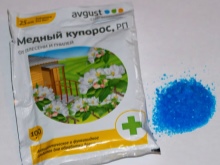
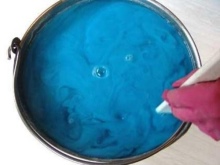
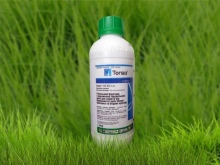
The use of biological agents
Biological preparations are created on the basis of living microorganisms and do not contain toxic elements in their composition, and therefore cause less harm to the culture itself and the entire garden. In this way, bushes can be treated against diseases with biofungicides (drugs that fight fungi), and against pests, respectively, with bioinsecticides.
Safe for currants Fitosporin used to prevent rust and powdery mildew, and Fitoverm effectively combats sawflies and all sorts of mites. When destroying insects on berry plantations, it will also be correct to spray the bushes. "Aktofit" and "Bitoxibacillin".
The drugs usually begin to work a few hours after the procedure and continue for three weeks. Spraying itself is most convenient to carry out using a watering can with a nozzle or a special device.
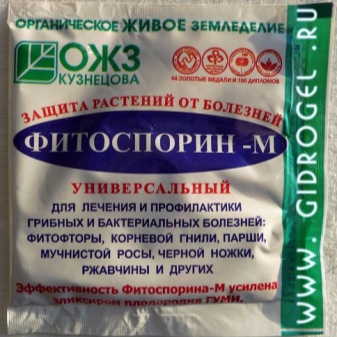
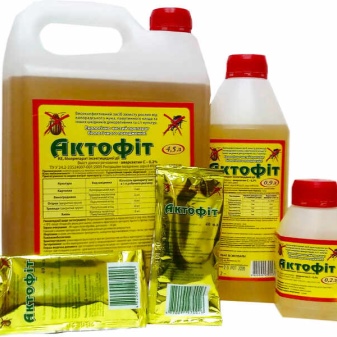
Traditional methods
The main advantage of folk recipes, embodied on the basis of available and often available components, is their safety both for the culture itself and for human health. Eating berries from bushes sprayed with such means will not do any harm later.
- The processing of currants with garlic tincture is considered quite effective: insects do not tolerate the sharp aroma of the liquid, and therefore stay away from plantings. It is prepared as follows: a couple of crushed fruits are poured with a liter of water at room temperature, hermetically closed with a lid and removed to infuse for 7 days. Before sprinkling the bushes with the mixture, you will need to dilute 0.5 liters of garlic infusion with a bucket of water.
- A decoction of wood ash is a "graft" against powdery mildew... Dry matter in the amount of 400 grams is poured with water and boiled, after which it is infused for 24 hours.
- Irrigation of bushes with infusion of celandine interferes with the life of aphids and moths... A prophylactic agent is created from 3 kilograms of dry grass, filled with liquid and infused for a couple of days. Before using it, of course, you will have to strain it.
- Many insects are afraid of laundry and tar soap. Small shavings obtained by rubbing on a grater are poured with boiling water and mixed thoroughly. The ready-made solution can be used immediately or after enrichment with powdered mustard, 2-3 tablespoons of which are enough for 10 liters of soap mixture.
- To create the onion infusion, the husk is used in the amount of 200 grams. Filling the dry component with 10 liters of boiling water and insisting it throughout the night, you can use the resulting mixture to process currants.
- Tobacco dust also gives a good effect against insects, 400 grams of which are supplemented with warm water. The drug requires daily infusion.
- In addition, a weak solution of potassium permanganate is widely used.
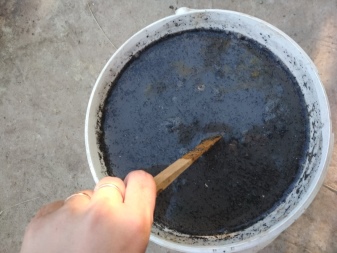
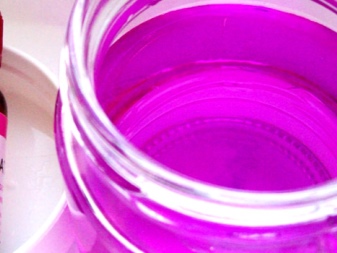













The comment was sent successfully.